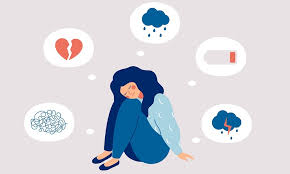Post-Traumatic Stress Disorder (PTSD) is a mental health condition that can develop after experiencing or witnessing a traumatic event. While it’s commonly associated with military veterans, anyone who has experienced a traumatic event can develop PTSD. Understanding its symptoms, causes, and treatment options is crucial for effective management and recovery.
Symptoms of PTSD
PTSD symptoms can vary in severity and may develop months or even years after the traumatic event. They can be grouped into four main categories:
Intrusive Memories: Flashbacks, nightmares, and severe emotional distress triggered by reminders of the traumatic event.
Avoidance: Avoiding places, people, or activities that remind the individual of the traumatic event, as well as emotional numbness and detachment.
Negative Changes in Thinking and Mood: Negative thoughts about oneself or the world, feelings of guilt or blame, and loss of interest in previously enjoyable activities.
Changes in Emotional Reactions: Irritability, anger outbursts, reckless behavior, and hypervigilance.
Causes of PTSD
While experiencing or witnessing a traumatic event is the primary cause of PTSD, not everyone who experiences trauma develops the disorder. Several factors can increase the risk, including:
Traumatic Events: Such as combat exposure, physical or sexual assault, accidents, natural disasters, or witnessing a violent death.
Risk Factors: Including a history of trauma or abuse, a family history of PTSD or depression, and certain personality traits.
Brain Chemistry and Structure: Differences in brain structure and chemistry may contribute to the development of PTSD in some individuals.
Treatment Options
Effective treatment for PTSD typically involves a combination of therapy, medication, and support from loved ones. Common treatment options include:
Psychotherapy: Cognitive-behavioral therapy (CBT), exposure therapy, and eye movement desensitization and reprocessing (EMDR) are commonly used to help individuals process and cope with traumatic memories.
Medications: Antidepressants, particularly selective serotonin reuptake inhibitors (SSRIs), may help manage symptoms of depression and anxiety associated with PTSD.
Support Groups: Connecting with others who have experienced similar trauma can provide validation, understanding, and coping strategies.
Lifestyle Changes: Regular exercise, healthy eating, and stress management techniques such as mindfulness meditation can help reduce symptoms and improve overall well-being.
Conclusion
PTSD is a complex mental health condition that can have profound effects on individuals and their loved ones. By understanding its symptoms, causes, and treatment options, individuals can seek help and support to effectively manage and recover from PTSD. With proper treatment and support, it is possible to live a fulfilling life beyond trauma.
Source – Mayo Clinic



